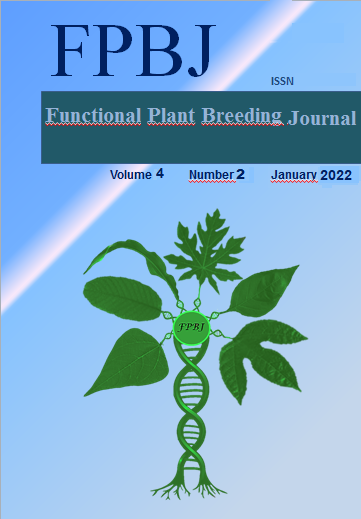SELECTION OF PODS IN F4:5 GENERATION OF SOYBEAN TO UNDERSTAND ASSOCIATION BETWEEN YIELD COMPONENTS USING PATH ANALYSIS IN THE GREENHOUSE AND FIELD ENVIRONMENTS
Abstract
In soybean breeding, several traits should be considered to a new improved variety. Among these traits, the number of seeds per pod has substantial influence, because combined with a large total number of pods per plant raises productivity. However, in plant breeding it is essential to understand the behavior of this trait in subsequent generations. The aim of this study was to analyze the influence of pods containing 1, 2 or 3 seeds of F4 generation in the formation of the next generation and their respective effect on the frequency of the number of seeds per pod, as well as the association of the yield components by path analysis F4:5. The experiment was conducted in the greenhouse and in the field, during the 2013/2014 crop season. Two F4 lines were used (L1 - Line 1 and L2 - Line 2) and a cultivar (M 7908RR). The experimental design was a completely randomized block in a factorial 3 × 3 design, involving three genetic materials (L1, L2 and M 7908 RR) and three different seed numbers per pod (1, 2 and 3) from each genotype. Regardless of the number of seeds in selected pods in F4, the frequency in pods of the next generation (F5) plants was not modified. In both environments studied the pods with 2 and 3 seeds had a direct and positive effect on seed yield. The selection for productivity can be obtained with the selection of plants with greater quantity of pods with two and three seeds.














